June 2019
Honoring Yesterday – Protecting Tomorrow
Vol. 50, No. 6
What’s Inside
- President’s Message
- Assumption Rate Falling
- Pension Facts
- RESDC Board Nominations Open
- Save the Date RESDC Roundup
- Bits and Pieces
- CRCEA Spring Conference
- Skip Murphy Guest Columnist
- Consider CECO in Your Charitable Giving
- Join Up In June
- Save the Date RESDC Day at the Padres
- Recent Events
- Members Share
- Flag Day / Independence Day Luncheon
- Welcome New Members
June Calendar of Events
Thurs., June 13, 9:30am
RESDC Board of Directors Meeting
8825 Aero Drive, Suite 205
Thurs., June 20, 9:00am
SDCERA Board of Retirement Meeting
2275 Rio Bonito Way, Suite 200
Thurs., June 27, 11:00am
Flag Day / Independence Day Luncheon
Ronald Reagan Community Center
195 E. Douglas Ave, El Cajon, CA 92020
![]() View the NETWORK
View the NETWORK
as a printable PDF
Are you on social media?
Stay connected with us!![]()
![]()
![]()
Quote of the Month
“The tyranny of a prince is not so dangerous to the public welfare as the apathy of a citizen in a democracy.”
▪ Montesquieu, 1748
President’s Message
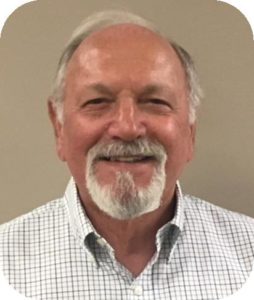
By John J. McTighe
This time of year, those of us with grandchildren in school look forward to graduations at various levels of schooling, some even from kindergarten. At RESDC, we are privileged to annually award $2,000 merit scholarships to five very deserving outstanding high school graduates who are relatives of our members. In addition, one student receives a $750 community service scholarship. One of the highlights of being RESDC President is to attend some of the high school awards assemblies to hand out the scholarships to these students and to let the families and friends know about RESDC and all the dedicated former public servants who make these scholarships possible. We’re also given the opportunity to appear in front of the County Board of Supervisors with scholarship recipients and their families to acknowledge these students. Watch for next month’s NETWORK to see photos and writeups on all the scholarship recipients.
The last couple of months have been busy for me attending conferences in my role as RESDC President. As has been reported several times leading up to it, RESDC was the host county for the semi-annual California Retired County Employees Association (CRCEA) conference held at the Mission Valley DoubleTree Hotel in mid-April. There were several great presentations, and participants came away from the conference with high praise for the work that was put into making the conference an enjoyable experience. The keynote address from one of the most notable Alzheimer’s Disease researchers, Dr. Paul Aisen, Director of the USC Alzheimer’s Therapeutic Research Institute (ATRI) was both informative and encouraging concerning the advancements being made to find a definitive cause that may someday lead to being able to prevent this terrible disease. PowerPoints of all the speakers’ presentations, including Dr Aisen’s, are available online at www.resdc.net/crcea. Once there, click on view/download presentations. See page 5 to read more about the 2019 CRCEA Conference.
In early May, RESDC Executive Director Mark Nanzer and I attended the semi-annual conference of the State Association of County Retirement Systems, more commonly known by its acronym SACRS, held in Squaw Valley. This organization consists of the retirement systems (e.g. SDCERA) of the 20 California counties which fall under the County Employees Retirement Law of 1937, known as the ’37 Act. Our attendance at these conferences helps us stay abreast of trends affecting organizations like SDCERA and to hear from some of the most notable experts in the fields of investments and retirement fund management. I believe we better serve our members by being aware of these and by networking with retirement board members who attend these conferences.
One of the interesting topics covered at the SACRS conference was “Retirement Readiness for the Life After Full-Time Work” by Don Ezra. Mr. Ezra, a retired actuary, urged the representatives of the various retirement systems to provide some education for active employees prior to retirement to assist them to prepare for a successful retirement. While he acknowledged that those with defined benefit retirements (like ours from SDCERA) are in a better position financially than those who rely on merely savings and/or defined contribution retirement plans, he pointed out that many people are not psychologically prepared for the transition from full-time work to retirement. He suggested three questions we can ask ourselves to help us prepare how we want to live out our retirement years. They are: 1) You have all the money you need, how would you live your life? 2) You have five years to live, how will you live your life? 3) You have only six months to live, what do you regret? By answering these questions for ourselves, Mr. Ezra contends that we will be able to better prepare our plans for the rest of our lives. He cautioned that anyone with a significant other should always ask and answer these questions with their significant other.
I encourage all our members in the San Diego area to attend the Flag Day/Independence Day Luncheon later this month. This year we have a special guest speaker who you will find very interesting and inspiring. Please click here for more information on how to register for this patriotic event. ◾
Assumption Rate Falling, Contributions Rising
By Stan Coombs, Director
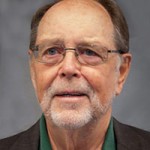 The San Diego County Board of Retirement voted unanimously last month to increase next year’s county retirement costs about $43 million and total employees’ retirement contributions about $11 million. The approved motion didn’t explicitly mention those costs, but the Board and anyone paying attention was aware of it. A background report made the implications clear.
The San Diego County Board of Retirement voted unanimously last month to increase next year’s county retirement costs about $43 million and total employees’ retirement contributions about $11 million. The approved motion didn’t explicitly mention those costs, but the Board and anyone paying attention was aware of it. A background report made the implications clear.
The change didn’t add value to the retirement system or improve system operations, and it didn’t reduce the unfunded liability. In fact, it increased it by $386 million, and reduced the funded level of the system from 78.4% to 76.6%. It also didn’t improve retirement benefits. So why?
First of all, the board action we’re talking about is another decrease in our retirement system’s assumption rate, from the previous 7.25% to 7.00%. And, once again the Board had little choice if they agreed with the rationale of their actuarial consultant. He made quite a case.
“Yes,” that’s the same actuarial consultant we talked about last month, Paul Angelo, of Segal Consulting, and “Yes,” we’re going into the weeds with him again. Angelo laid out details in a 75-page report, San Diego County Employees Retirement Association Actuarial Experience Study, which included re-consideration of more than 30 previous demographic and economic assumptions and factors used in calculating future costs and revenues. He recommended adjusting 27 of these.
Board of Retirement policy calls for such a comprehensive review every three years.
The numerous demographic assumptions included items as arcane as what proportion of pre-retirement employees will die before retirement, and whether there are financial implications to actuarially categorizing dependent spouses who are not of the opposite sex with those who are, while the economic assumptions only included inflation, the investment real rate of return, assumed expenses and risk. The latter are ultimately combined into a “net investment return assumption rate,” commonly referred to as “The Assumption Rate,” which allows an estimate of earnings expected from the invested retirement fund over a substantial period of time.
That’s important. The National Association of State Administrators (NASRA) calls it “the single most consequential of all actuarial assumptions in terms of its effect on a pension plan’s finances.” It allows calculations of future investment earnings, which, in turn, allows calculations of additional revenues that will be needed from the County and from employee payroll deductions.
If the assumption rate is set too high and expected investment earnings subsequently fail to materialize, it means the county retirement plan is shorted funds needed to cover earned benefits. That creates an unfunded liability that must be paid off by future taxpayers through the public employer. Alternatively, if the assumption rate is set too low and investment earnings exceed what is needed, it means that too much was apparently required from current taxpayers via the public employer, and from employee contributions…in either case an unfortunate, expensive anomaly.
Further, the very action of reducing the assumption earnings rate adds to any unfunded liability because the target’s been moved, so to speak. Some period has passed when county and employee contributions were insufficient, given the subsequent reduced investment earnings expectation. Alternatively, increasing the assumption earnings rate reduces any unfunded liability, because higher contributions were required from the County and employees in the past than are needed, given the subsequent increased investment earning expectation.
A bit of history here. This actuary’s recommendation wasn’t unexpected. Public retirement investment assumption rates have been in a downward trajectory. NASRA reports that 90% of the 129 state retirement plans they surveyed in 2018 had reduced their investment assumption rates since 2010. The trend began as early as 2001. Both large California state public plans, CalPERS, for public employees and CalSTRS for teachers, recently moved down to 7.00%. Our own San Diego County retirement plan started moving down in 2011, in irregular, quarter-percent steps from their previous 8.25% rate to this new 7.00%. The 8.25% had been in place since 1997.
More context for costs impacts described in the first paragraph might be helpful. Extrapolating from inexplicit published graphs, total normal county retirement contributions of about $365 million have been estimated for FY 2019-20. The $43 million increase will raise that about 11.8%, and is about .7% of the current $6.3 billion county budget.
What about the hit on active employees? Mr. Angelo’s report provided that. Their $11.3 million increase, applied across the eight general member and safety retirement tiers, will raise retirement payroll deductions an average of .87% overall, from a 1.03% high to a low of .55%. Current year employee contribution rates aren’t handy, but reported total rates for the year before, FY 2017-18, averaged 11.67% for all employees, ranging from a 20.38% high to a low of 6.02%. ◾
Pension Facts
Reducing Retirement Benefits to Save Money? Not So Fast…
Pension Facts at a Glance
7.0%
Based on its actuarial consultant’s recommendation, SDCERA has voted to reduce its investment return assumption rate from 7.25% to 7.0%.
By Chris Heiserman, Director
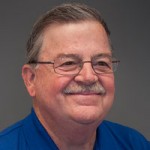 Retention and recruitment challenges are real issues for public agencies that hope to cure budget ills by shifting workers from traditional defined benefit (DB) pensions to defined contribution (DC) plans like 401(k) savings accounts. A very local example is the much publicized City of San Diego voter-approved Proposition B. This 2012 measure eliminated pensions for most newly hired employees (except police) and froze pay for all workers for five years.
Retention and recruitment challenges are real issues for public agencies that hope to cure budget ills by shifting workers from traditional defined benefit (DB) pensions to defined contribution (DC) plans like 401(k) savings accounts. A very local example is the much publicized City of San Diego voter-approved Proposition B. This 2012 measure eliminated pensions for most newly hired employees (except police) and froze pay for all workers for five years.
The proposition was found defective recently after a protracted legal battle that made it all the way to the California Supreme Court. Resolving the matter is expected to be expensive since some 2,000 city employees have been hired since 2012 and have only what was set aside in a 401(k) account as a retirement benefit. In addition, being the only public agency in California with no defined benefit retirement plan for new hires, the City of San Diego has lost experienced workers to other government organizations and had difficulty attracting quality candidates for job openings. The city’s problems attracting and keeping good employees extended as well to the police department due to the five-year salary freeze.
Many critics of defined benefit public retirement systems that produce a guaranteed lifetime pension benefit for vested workers argue that state and local governments should move all new employees to 401(k) savings accounts. This has been the prevailing trend in the private sector for decades; however, the idea that closing a traditional pension plan and placing new hires in a 401(k) plan will be beneficial for taxpayers and employees over time has been pretty well discredited.
A 2015 report from the National Institute on Retirement Security described three case studies where states switched to defined contribution plans from traditional pensions: West Virginia, Michigan and Alaska. West Virginia closed its Teachers Retirement System (TRS) DB plan in 1991 and moved newly hired teachers into a DC plan. Teachers in the traditional pension plan were also given a one-time choice to move to the DC plan. The state later realized it had overlooked some key details. Unfunded obligations for the DB plan remain but there are fewer members contributing with the plan closed. By 2005 TRS paid pension benefits to nearly 27,000 retired teachers, but less than 18,000 active teachers still contributed to the fund. The plan’s funding level was only 25%.
At the same time the DC plan was not performing well and that was exacerbated by a bear stock market downturn in 2000-2002. Account balances were too low to provide retiring teachers with a satisfactory retirement income. They found that the average investment return for the DB plan was 1.6% higher than the DC plan over a 10-year period. By 2003 the state decided to take a hard look at the results of its decision to switch to a DC plan, and beginning in 2005 (15 years after the move to a DC plan) all new hires went back into the DB plan. In 2008 the state allowed teachers who had been hired into the DC plan to switch over to the TRS DB plan and almost 79% (some 15,000 members) opted in. The large influx of new members improved the fiscal viability of the DB plan, with its funded level at 58% by July, 2013.
Michigan closed its traditional pension plan for state workers in 1997. Similar to the West Virginia experience, the cost of the DB plan went up significantly and the work force felt its future retirement security was greatly diminished. In fact, even though the state thought it would benefit because the employer contribution would be capped at 7%, the real cost savings realized by Michigan in the DC plan resulted from the much lower income benefit projected for future retirees.
So 20 years after Michigan switched to a 401(k) plan, the state Office of Retirement Services reported that the average account balance was just $77,000. Figuring a normal lifetime annuity calculation for a 65-year-old with that “nest egg” would amount to a monthly benefit of $400 in retirement income. When Michigan closed its DB plan, it had 109% of assets to cover all benefit liabilities. Fifteen years later, after freezing new hires out, the plan was seriously underfunded, with a funded ratio of just 60.3%.
In the case of Alaska, legislation was enacted in 2005 that moved all new hires after July 1, 2006 into a DC plan. At the time the state’s two pension plans already faced a combined unfunded liability of $5.7 billion. The switch was proposed as a way to slow down the increasing unfunded status. However, losing a growing percentage of employees to the DC plan curtailed the one steady source of pension funding in Alaska. And state officials continued a pattern of underfunding its DB obligations, which only worsened matters.
According to the 2015 NIRS report other states and agencies that have considered shifting from DB to DC plans and analyzed the costs in detail have found they would save little money in the long term and could experience much higher expenses in the short term. Not to mention the competitive disadvantage agencies with only DC plans face in attracting and retaining quality employees due to the lack of opportunity to earn a stable and secure retirement. ◾
RESDC Board of Directors Candidate Nominations are Open
By Carlos Gonzalez, Elections Committee Chair
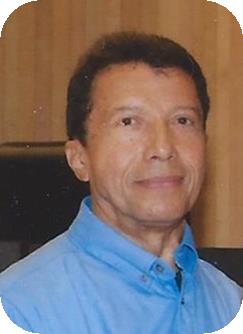 Welcome to RESDC’s 2019 annual election season. The election process runs through the middle of October. The terms of four (4) Directors, President, and Second Vice-President will expire December 31, 2019; the new term runs January 1, 2020-December 31, 2021 (two calendar years).
Welcome to RESDC’s 2019 annual election season. The election process runs through the middle of October. The terms of four (4) Directors, President, and Second Vice-President will expire December 31, 2019; the new term runs January 1, 2020-December 31, 2021 (two calendar years).
Changes that impact San Diego County retirees demand active participation by County retirees. RESDC encourages all members to contribute their talents for the benefit of the entire membership so that our organization can remain strong and productive in the years ahead.
We need prospective candidates who wish to volunteer time and effort to pursue RESDC’s business, attend monthly board meetings, and be present at six general membership meetings each year. One term as director is an excellent way to “get your feet wet” in the Board of Directors and could later lead to a position as an Officer.
For the first time, active employees, registered as Associate Members, are eligible to run in the election. According to recently enacted Bylaws, participation is restricted to the election of one Associate Member, to an open position of Director (Officers’ seats are restricted to retirees, who are present or former board members).
Interested RESDC members must file a candidacy statement (200 words or less), with a summary of your background and work experience to: RESDC, 8825 Aero Drive, Suite 205, San Diego, CA 92123, or by email to: resdc@resdc.net, by August 2, 2019. Please state your candidacy for one of the following: RESDC Director (4), President, or Second Vice-President. Only current and past board members are eligible for the President and Second Vice-President positions.
If you have any questions, please contact our office by phone at (866) 688-9229 or by email at resdc@resdc.net. ◾
 Save the Date!
Save the Date!
RESDC Roundup
July 24, 2019,3:30pm
Stone Brewing World Bistro and Gardens, Escondido
It’s that time once again RESDC members. You know…time for another fun-filled RESDC Roundup!
This time we will be heading north to Escondido to visit the beautiful Stone Brewing World Bistro and Gardens in Escondido!
The Roundup provides an opportunity to catch up over libations and appetizers with RESDC leadership and fellow members. This is a no-host event. Food and beverages are available for purchase from the restaurant/bar. No reservation required. Come meet with old friends and make some new ones!
Date: Wednesday, July 24, 2019
Time: 3:30 pm to 5:00 pm
Location: Stone Brewing World Bistro and Gardens, Escondido
1999 Citracado Parkway, Escondido, CA 92029. ◾
Bits and Pieces
Lola Calabrese and her husband celebrated their 70th wedding anniversary last month! They live in San Diego and Lola will be 95 years old this year! She and her husband have had a great life together. They have traveled all over the world and they have danced a lot during their long marriage.
John Wygle recently celebrated his 90th birthday! He retired from Health and Human Services in 1981 after many years with the County. John and his wife, Audrey, have enjoyed traveling during retirement. They have visited all 50 states and 31 different countries. They live in New Mexico and still love traveling in their RV. ◾
CRCEA Spring 2019 Conference
Hosted by RESDC
RESDC is proud to have hosted the CRCEA Spring 2019 Conference, which marked the 50th anniversary of the California Retired County Employees Association (CRCEA). The conference was held April 14-17, 2019 at the Doubletree Hotel Circle in central San Diego.
CRCEA is a nonprofit that represents 20 California retired county employee associations, including RESDC. CRCEA provides a forum for educating members and promoting retiree benefits and issues. Leadership from these associations meet at semi-annual conferences to share ideas and review information relevant to legislation, the state of health care, senior safety, and other issues of importance to retirees. These events help our associations strengthen our collective advocacy for retirement security.
The RESDC Roundup on April 14 at Stone Brewing was a smash hit with our conference attendees. Thank you to all the RESDC members who attended and made our out of town guests feel welcome.
SPEAKERS
We are very grateful to all the speakers who presented at the conference: Dr. Paul Aisen, Dianne Jacob, Eddie Baca, Chris Brewster, Paul Greenwood, Julie Jeakle, Hank Kim, Pat Mosteller, Mark Nanzer, Gaspar Luna Oliveira, Jolyn Parker, and Liz Silverman. Thank you to our Programming Committee, which worked hard to arrange a comprehensive event with a variety of topics.
SPONSORS
We would like to take a moment to thank our conference sponsors. Through their generous support, along with registration fees, we were able to fully cover the costs of hosting the conference. Thank you to our Sponsorship Committee, which diligently secured these sponsorships.
Platinum Sponsors
- California Retired County Employees Association
- Pacific Group Agencies
- My Senior Health Plan
- Denali Advisors
Gold Sponsors
- Ameritas Group Dental & Eye Care
- Nationwide
Silver Sponsors
- DoubleTree by Hilton San Diego – Hotel Circle
- North Island Credit Union
In-Kind Sponsors
- AMC Fashion Valley 18
- Bel Vino Winery
- EmbroidMe – La Mesa / Fully Promoted
- Event Outfitters
- Janel Pehau
- JJ Davis and Associates
- Newbreak Church
- RESDC Scholarship Committee
- San Diego County Credit Union
- San Diego County Employees Retirement Association
- See’s Candies
- Superior Direct
- Trader Joe’s
RESDC BOARD, STAFF, & VOLUNTEERS
The RESDC board and staff all contributed significantly to ensuring this was a successful event. But we couldn’t have done it without the help of our volunteer RESDC Ambassadors who made this conference truly shine: Helen Antoniak, Dottie Badger, Sandy Church, Daisy Mayers, John Melbourn, Joe Minner, Miriam Plotkin, Roberta Ratzlaff, Maria Rubio-Lopez, Mila Thurber, and Eric Wong. Thank you! ◾
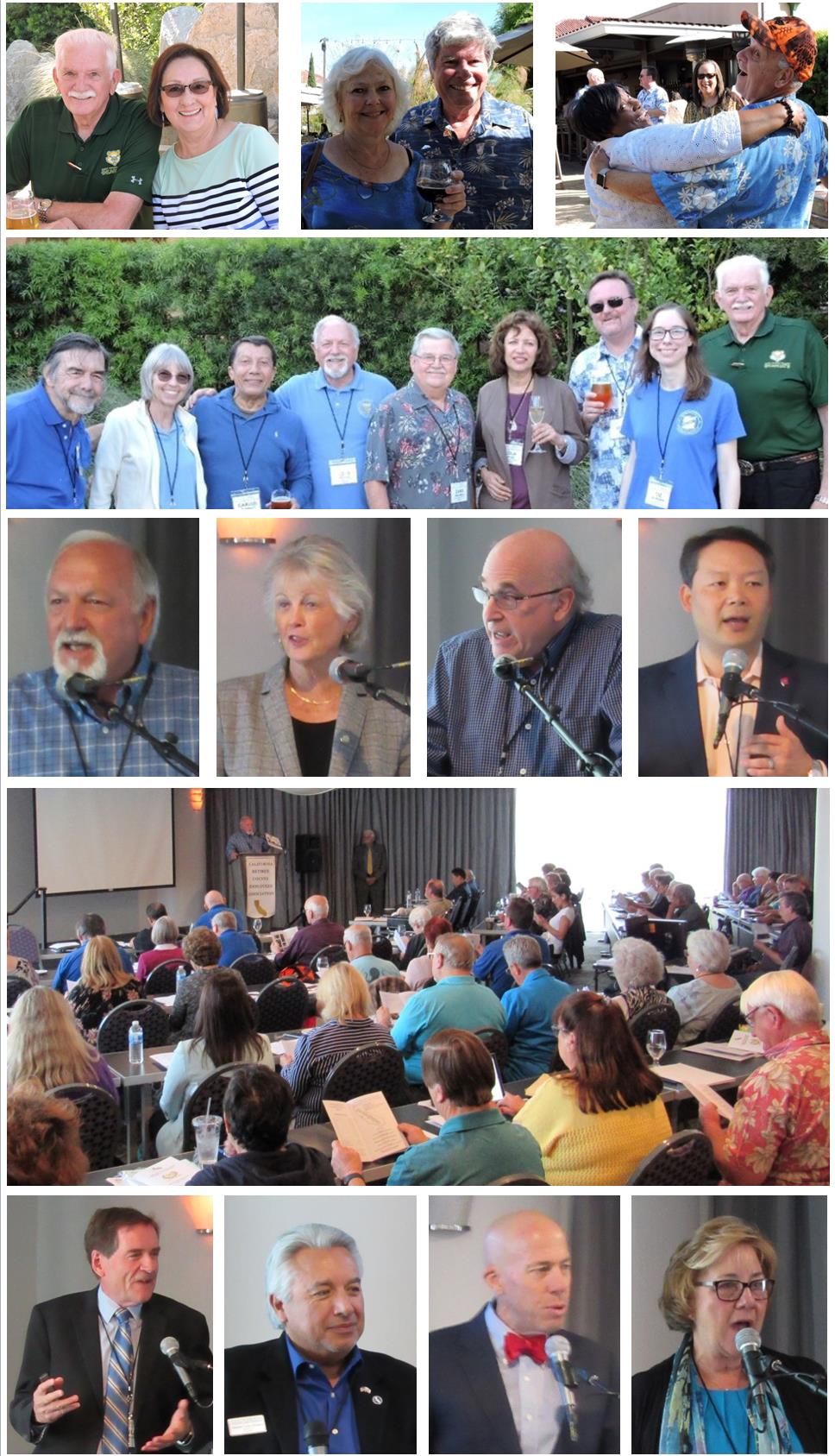
About Retirement
By Skip Murphy, SDCERA Retirement Board Member
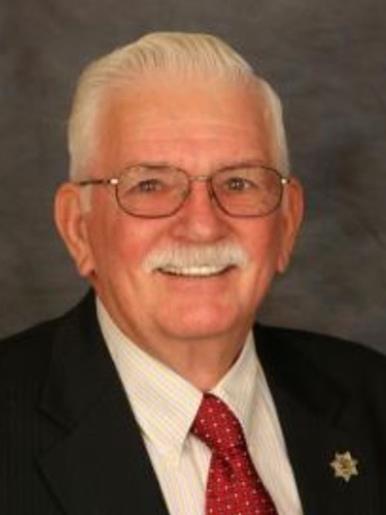 It’s been quite some time since I sent in something for publication to all our members, so I thought this might be a good time to bring you all up to date on a couple of key Retirement Board activities and issues.
It’s been quite some time since I sent in something for publication to all our members, so I thought this might be a good time to bring you all up to date on a couple of key Retirement Board activities and issues.
As most retirees have already figured out, the “pay raise” for those retired just went up an additional three percent (3%) (Tiers I, II, and A). But, as everyone noticed, the cost of just living in a stable way also continued to go up during the past year. The real cost of living in the greater San Diego area (Consumer Price Index- CPI) went up by 3.37%, so unless those still working got more than that; as well as the retirees with the 3%, there is still some catching up to do to stay even. The 3% for retirees is the maximum amount allowed by the retirement program. But, retirees did not lose the remainder. It goes into a “COLA Bank” that can be used at some later year when the cost of living adjustment (COLA) is granted and the Consumer Price Index didn’t quite get up to an allowed adjustment amount.
Just for information, this COLA Bank can also be a negative number if an increase is granted that exceeds the actual CPI amount. This COLA Bank is a terrific benefit that allows retirees to get an amount that is critical to maximize the stability of your continuing income through your earned pension payment.
I want to set the record straight from my perspective on all the negative comments and articles that are out there concerning the “devil” known as the Defined Benefit Pension. So much has been put forth that shows how badly underfunded some pension plans are. And, some of them are. However, this is not the result of the underlying idea of a defined benefit plan, but mostly due to the sponsor of the plan not making the payments required of them into the pension system and underfunding what should be in the payment plan over the ongoing 20 or 30 years.
Our retirement system, San Diego County Employees’ Retirement Association, known as SDCERA, is funded at approximately 80%. This number is a snapshot in time when the study is done (June 30th of each year) and will change annually.
SDCERA’s plan sponsor is the County of San Diego, and they have been very responsible in funding their required payments. In fact, that responsibility to fund the system is taken very seriously by the County and they not only fund the required payments, they have regularly provided more in order to try to continue to bring the funding level up.
It’s important that you understand how the funding works. Each employee pays or paid a specific amount taken directly out of their paychecks to pay the employee part of the future benefit (pension). This amount is based on your entry age into the workforce and a projection of how long you will be working to get a pension. The County also paid a specific amount into the fund based on a similar method. Both are calculated by a complex actuarial method calculated by an independent actuary whose business is to calculate this type of information.
The contributions by both parties are invested by our investment professionals in order to generate additional funds for the pension system. As you would expect, there are good years when the investments make a lot of returns and the not-so-good years when the investments make less. Each year the actuary calculates all of these numbers and spreads the gains and losses out over the next five years so the gain or loss is not too extreme. This “five-year amortization” works to smooth out the peaks and valleys on costs over time.
Are you confused yet? There are a number of other variables that the actuary also must use, but that will get us way “into the weeds” even more than I already have.
The recommendations of the actuary are discussed and then approved by the Board of Retirement.
So why go through all of this? I hope that this information will dispel all the negative things you have heard, particularly when the media puts forth how greedy we are and how overly generous the plan sponsors are. Local governments are trying to look after their workers for being both loyal and long serving. In this arena, I look at our plan sponsor as being so much more humane than private corporations who pushed aside regular pensions for their workers and told them to just save for their own retirement. Is it any wonder that private sector workers are working into their 70s and beyond?
I know that many of us worked for 20 or 30 or 40 years, and reached our retirement years. We all hope that we live a good and comfortable life into retirement. So here are some figures for you to think about.
Below is a breakdown of the approximate number of current SDCERA members who retired with more than 20 years of service:
| Years of Service | # of Members |
|---|---|
| 20 – 25 years | 2301 |
| 25 – 30 years | 2036 |
| 30 – 35 years | 1542 |
| 35 + years | 331 |
Now compare that to how long some of our members have been retired:
| Years Retired | # of Members |
|---|---|
| 20 – 25 years | 1262 |
| 25 – 30 years | 712 |
| 30 – 35 years | 410 |
| 35 + years | 324 |
So, you can easily see that the benefit you have paid for and earned is something that is life saving and gives you that on-going comfort well after you left county service.
While we sometimes complained about the amount pulled out of our checks each payday, the question to you is could you have saved the amount of money in your working career to substitute for your retired income through the retirement system? Candidly, I doubt it. In my case, in looking back, it was money well spent (actually saved).
If you have questions or issues, please feel free to drop me a note at smurphy@sdcera.org. ◾
 How to Feel Good on a Bad Day
How to Feel Good on a Bad Day
By Carra Rhamy
Even when I have a bad day, I always feel good. That is how I have always felt since I have been a CECO (County Employees Charitable Organization) contributor. When I was working, even when it seemed everything I did at work was going wrong, I could always think that as long as I worked that day, I was paid, and as long as I was paid, some of that money went to CECO and I was contributing to helping someone else. But now that I’m retired, I still like to have the feeling that even if my day doesn’t go as planned, I have done something good for someone else, because part of my retirement check goes to CECO.
We all give money to many charitable organizations and the beauty of retirement is that I am now able to give more of my time and be involved with some of those organizations. But I still give money, as well as my time, to CECO because it remains my favorite charity for several reasons. Number one is because 100% of the money that is taken in is given out to the charities. None of the money goes to overhead or administration, and I don’t know of any other charity that does that. Another reason is that each charity that receives the money must show it was spent on the particular item for which it was requested. So, you know exactly where your money goes.
I also like the efficient way the allocation committee works. I have been on the allocation committee for four years, and I am always impressed with the way each member of the committee reviews every application and is able to discuss them. This year there were 174 applications. Most of the allocation committee members are currently working at the County, but they still take their own time to review all the applications and meet to discuss them. This year we granted over $139,000 to over 88 worthy programs in various parts of the County. That was awesome.
And finally, I am always so impressed with the stories I hear and the people I meet at the annual breakfast where the grants are awarded. Each organization receives their check, and each has a brief opportunity to talk about what they do, how the money will be spent and the impact it will make to deserving individuals. Whether it is mattresses for a homeless shelter, diapers for young mothers who attend an education program, musical instruments for a therapy program or food for seniors, it is always heartwarming to hear where the money is going and how it will be used.
I’m so happy that County retirees can be members of CECO and contribute as little as $5 or $10 per month and that can make a big difference in our communities. For more information on CECO and this year’s grants go to www.sandiegocounty.gov/ceco. If you are not currently a contributor, you can download the form at: www.sdcera.org/PDF/CECO_deduction.pdf So even if you have bad day, you too can feel good. ◾
Join Up in June!
By Chuck Brown, Membership Committee Chair
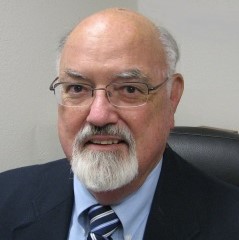 We jumped off in January in hopes of recruiting retirees who’ve not yet joined RESDC. This month is “Join Up in June.” In May, our board members said why they joined RESDC and we asked for input from the general membership. Here’s a sampling:
We jumped off in January in hopes of recruiting retirees who’ve not yet joined RESDC. This month is “Join Up in June.” In May, our board members said why they joined RESDC and we asked for input from the general membership. Here’s a sampling:
John Melbourn: I would make the same decision to join that I made 26 years ago, that RESDC has been very informative on many pertinent elements of retirement. It seems that there is new information presented in each issue of The NETWORK plus internet announcements of upcoming activities that are related to me as a retired county employee. Of course, it helps that you and other members of the staff are so accommodating whenever I have a request for information.
Jean Stasko: I joined RESDC when I retired in 2004. The monthly newsletter helps me keep up to date on how our retirement system is doing and how different laws may or may not affect us retirees. It’s also a good reminder of upcoming social events. I especially like to assist at the annual health fair picnic/barbeque. It’s fun to see folks I may only see once or twice a year and it gives me information on the health options we have as RESDC members.
JUNE Action Item: Invite someone to the Flag Day/Independence Day Luncheon. Can’t attend? Then, once you’re finished with your NETWORK, pass it along to someone who might become a member. If you receive the NETWORK by email, forward it to your friends. ◾
Recent Events
-
Arm Yourself and Become a Defender of Public Pensions. Public pensions remain one of the most efficient forms of fiscal policy for state and local governments, however, decades of corporate greed and misguided policy decisions have left public pensions vulnerable to attack from politicians, the media, and the public. In 2010, National Conference on Public Employees Retirement Systems (NCPERS) created the Public Pension Toolkit; a template for what local or regional media outreach efforts built to support retirement security for all public employees should contain. In the eight years since NCPERS first created the tool kit, the issues and universal messages have evolved. To learn more and access the tool kit, visit: https://www.ncpers.org/advocacyactivities.
-
Do you know about “Age On. Rage On.?” You Should! LeadingAge® California launched the Age On. Rage On.™ campaign in 2019 to bring to light the urgent need to develop a Master Plan on Aging in California that expands 1) Long-Term Services and Supports for older adults and 2) The Caregiver Workforce necessary to ensure that all Californians can age with dignity. California’s population is diverse and vigorous—we’re living life to its fullest. That should be no different for older Californians. We should all have the same opportunity to thrive and have access to worry-free, high-quality care. Learn more here: https://ageonrageon.com/. ◾
Members Share
By Frank Bittner, RESDC Treasurer
Public Administrators Department, Retired 1990
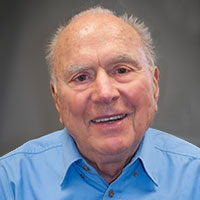 As a World War II Navy veteran, I was privileged to be a member of the May 3rd San Diego Honor Flight to Washington D.C. for World War II and Korean War veterans. The Honor Flight is a non-profit organization that provided an all expense weekend tour of Washington D.C. military monuments, Arlington Cemetery, and other significant historical sites for the 83 veterans on board. Included was the relatively new (for me) World War II Monument.
As a World War II Navy veteran, I was privileged to be a member of the May 3rd San Diego Honor Flight to Washington D.C. for World War II and Korean War veterans. The Honor Flight is a non-profit organization that provided an all expense weekend tour of Washington D.C. military monuments, Arlington Cemetery, and other significant historical sites for the 83 veterans on board. Included was the relatively new (for me) World War II Monument.
Frank has been a member of the RESDC Board of Directors since 1991 and presently serves as Treasurer. He retired from the Public Administrators Department in 1990 and has prior county experience with the Registrar of Voters Department, Integrated Planning Office, the Assessors Department, and the Welfare Department. He retired from the Navy after almost 30 years of service as a lieutenant. ◾

 Save the Date
Save the Date
RESDC Day at the Padres
Thursday, September 12, 2019, 12:40pm
Save the date for our annual RESDC outing to see a ballgame at Petco Park. This year it will be San Diego Padres vs. Chicago Cubs. Stay tuned to future NETWORKs for detailed ticket and game information. ◾
Flag Day / Independence Day Luncheon
Thursday, June 27, 11:00 am
Ronald Reagan Community Center

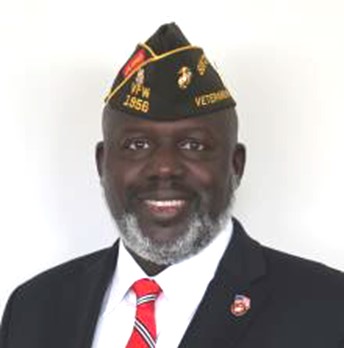 We are pleased to announce that our featured speaker at the luncheon will be Master Gunnery Sergeant Arthur “Artie” Allen III, United States Marine Corps – Retired.
We are pleased to announce that our featured speaker at the luncheon will be Master Gunnery Sergeant Arthur “Artie” Allen III, United States Marine Corps – Retired.
Artie is a native of Miami, Florida and joined the Marine Corps in 1986. He’s a proud three-war combat veteran having served in Operations Desert Shield/Desert Storm, Operation Iraqi Freedom, and Operation Enduring Freedom in Afghanistan. He also served a tour of Drill Instructor duty at the Marine Corps Recruit Depot in San Diego.
Artie’s personal decorations include the Legion of Merit, Defense Meritorious Service Medal, Meritorious Service Medal, Navy and Marine Corps Commendation, Navy and Marine Corps Achievement Medal, and the Military Outstanding Volunteer Service Medal.
Artie retired on September 1, 2016 after serving nearly 31 years of honorable and faithful service. In the 2½ years since his retirement, Artie has volunteered at 123 events totaling 439 hours not including the extraordinary amount of time spent at planning, coordinating and related support activities & tasks. He resides in Menifee, CA where he enjoys his volunteerism activities in Veteran Services and as a Docent for the Marine Corps Recruit Depot Museum Foundation, San Diego, CA.
Artie’s presentation at the Flag Day/Independence Day Luncheon will include origins of Flag Day and Independence Day, and the significance of our flag’s symbolism.
Please join us for our new joint celebration of two historic days in American history. In addition to our normal commemoration of the adoption of the flag of the United States, we will also be recognizing the day in which 13 colonies claimed their independence from England, an event which eventually led to the formation of the United States.
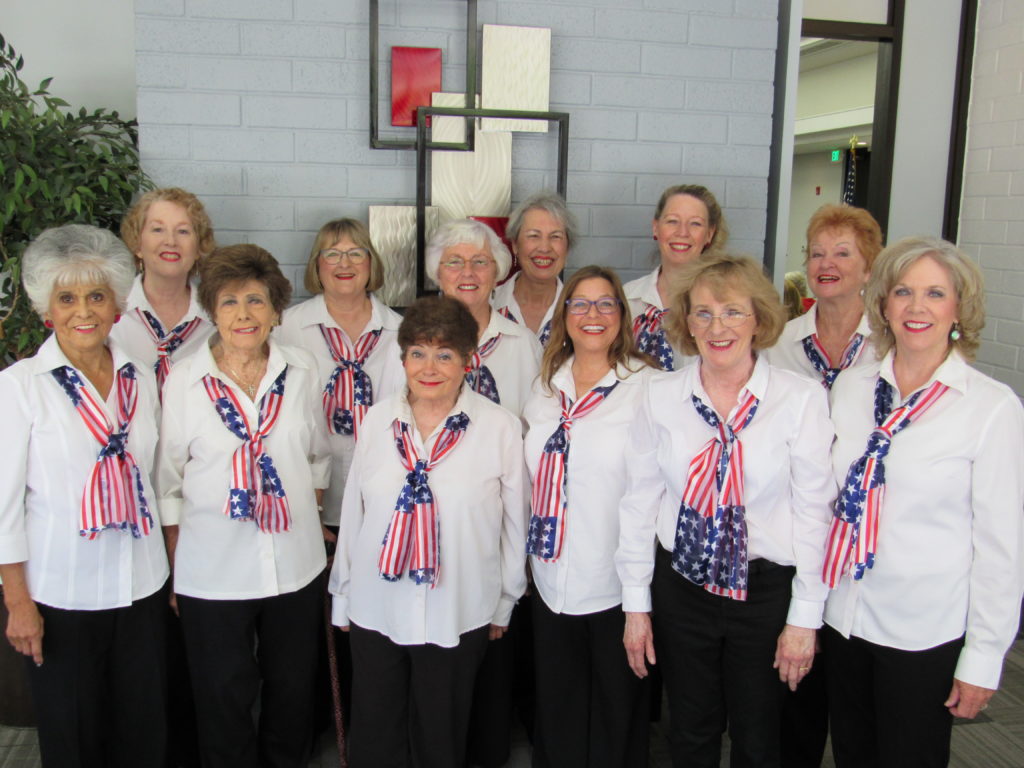
California Note Catchers
Entertainment will be provided by the California Note Catchers, a nonprofit women’s barbershop harmony chorus. We’ll enjoy a buffet style lunch at approximately 12:15 pm, with ham, roast turkey, rosemary potatoes, green beans almandine, salads, desserts, and beverages. This is an indoor event with ample free parking on both sides of the center.
When
Thursday, June 27, 2019 at 11:00am
Lunch at approximately 12:15pm
Where
Ronald Reagan Community Center
195 E Douglas Ave, El Cajon, CA 92020
Menu
Buffet style lunch with ham, roast turkey, rosemary potatoes, green beans almandine, salads, desserts, and beverages.
Cost
$14 per person
Directions
The Ronald Reagan Community Center is located one block south of E. Main Street, El Cajon, directly off Magnolia Ave. Take I-8 to Magnolia off-ramp, go south to E. Douglas and turn left.
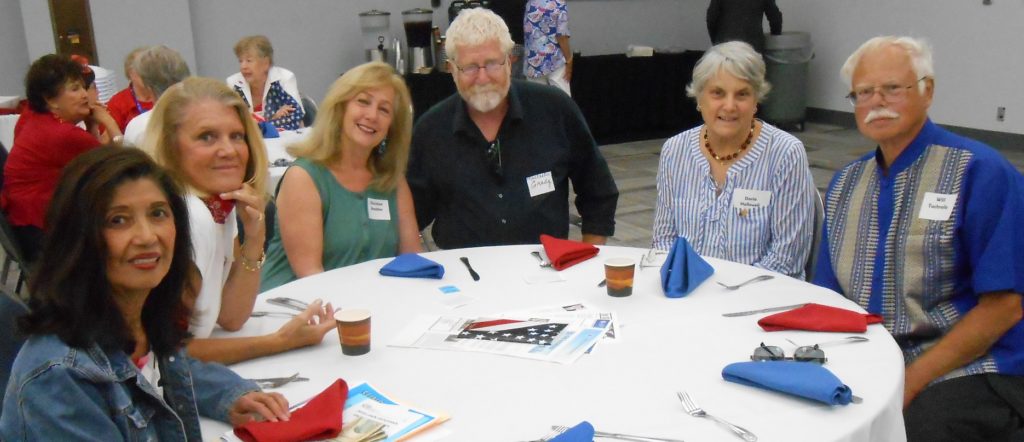 Registration
Registration
The registration deadline is Friday, June 21. Name badges and opportunity drawing tickets should be picked up at the check-in table at the luncheon. They will not be mailed.
Register by Mail:
- Print and fill out the registration form.
- Make a check payable to RESDC for $14 per person.
- Mail registration form, along with check, to RESDC, 8825 Aero Dr., Suite 205, San Diego, CA 92123.
Register Online: Click here and follow the steps to register online. You will need to use the email associated with your member account. Click “Add guest” to add additional registrants for $14 each. To pay for yourself and guests, click “Pay Online” and pay with credit card.
Register by Phone: Call the RESDC Office at (619) 688-9229 during our hours of 9 am – 2 pm Mon-Fri.
For questions or assistance registering, contact us at (619) 688-9229 or resdc@resdc.net. ◾
Welcome New Members
Marilyn Fink – Sheriff
Diane M. Fulham – Superior Court
Kathleen M. Goldkamp
Lorraine F. Lowerison
Ky Luong – Health & Human Services
Timothy Mathues – Health & Human Services
The surviving Spouse of a member is eligible for RESDC membership. For enrollment assistance, please call: (866) 688-9229. ◾
NETWORK is the official monthly newsletter of the Retired Employees of San Diego County, Inc. (RESDC), a private non-profit organization.
The information printed in the NETWORK is believed to be from reliable sources. However, no responsibility is assumed by the NETWORK for inaccuracies contained herein.
Business and Inquiries: Business matters and address changes may be recorded on our voicemail at any time, call (866) 688-9229. Please spell your name so the correct member record can be located.
Retired Employees of San Diego County, Inc.
8825 Aero Drive, Suite 205 | San Diego, CA 92123
Office Hours: 9 a.m. to 2 p.m. Monday through Friday
TELEPHONE: (866) 688-9229 Toll Free
FAX: (619) 688-0766
E-MAIL: resdc@resdc.net

